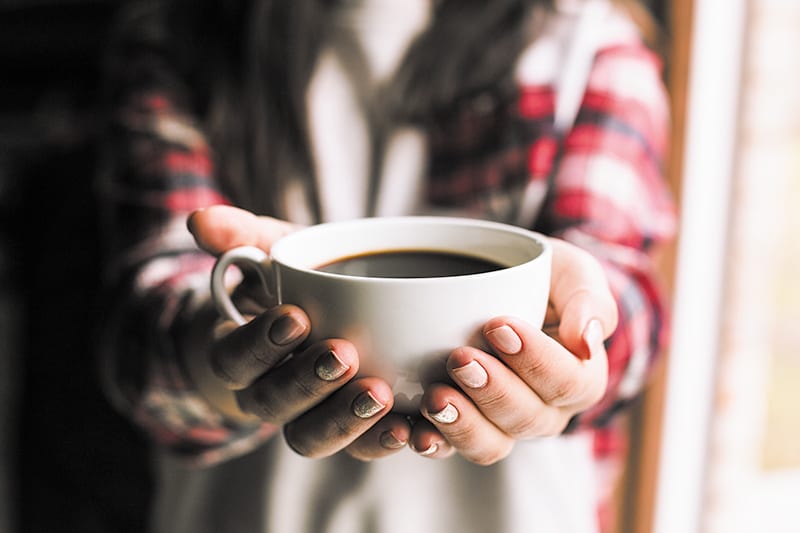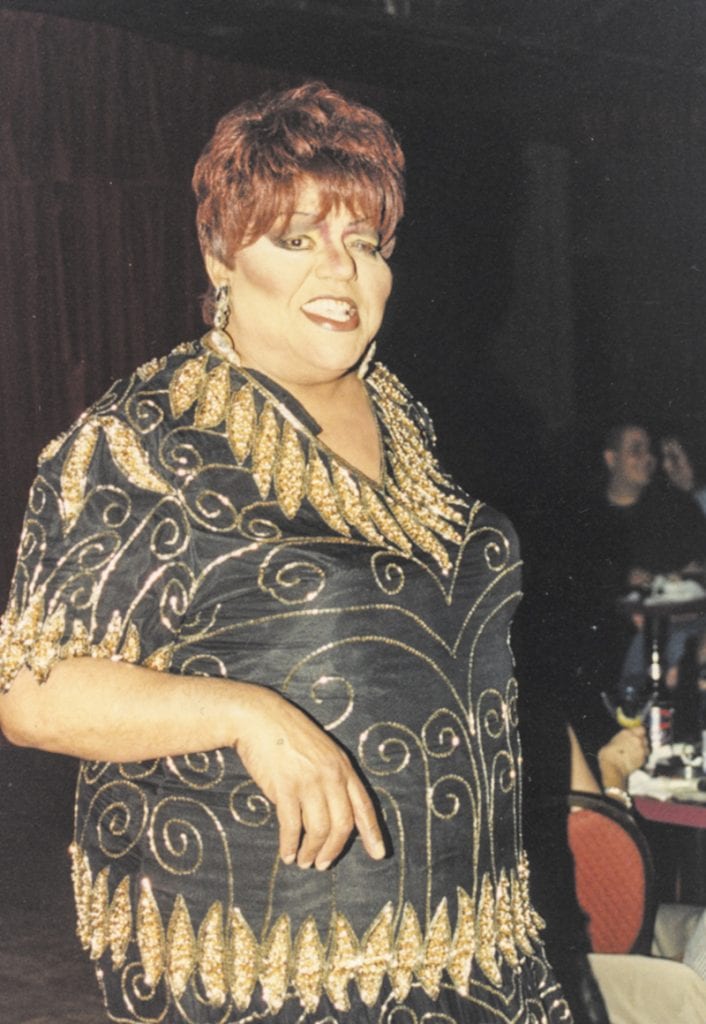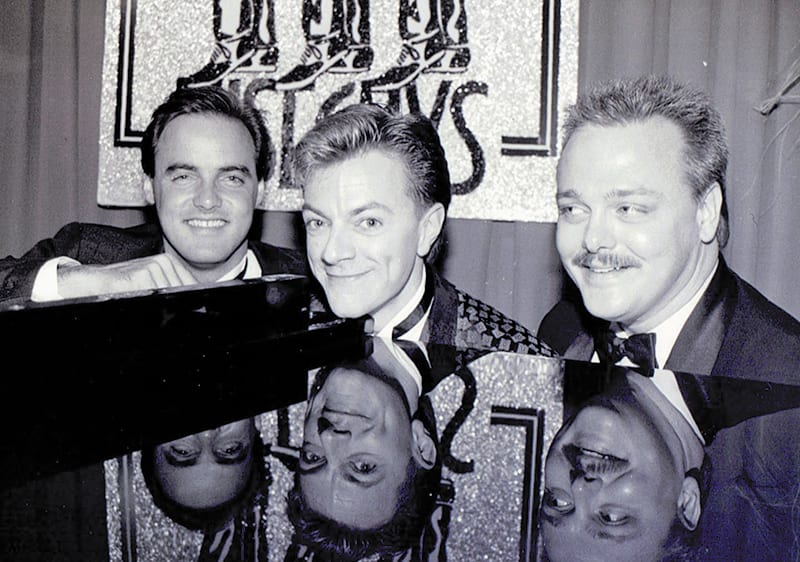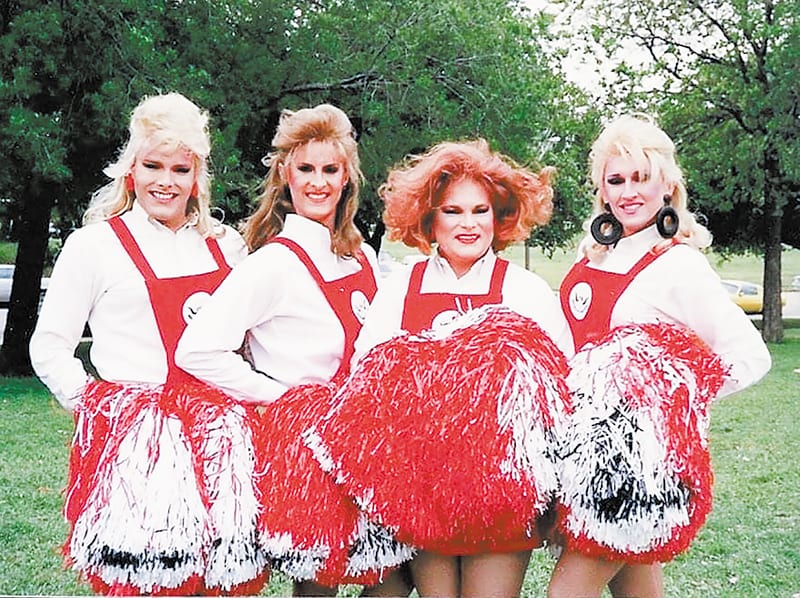RSVP
An oral history of the gayborhood of the past
Any thriving community is an organic thing. And as a result, parts of it die off — whether people or places or things. Dallas’ gay community, which Dallas Voice has been privileged to serve and document for 35 years this week, has changed a lot over its lifespan. We have had our cultural centers — baths, bookstores, bars… restaurants, coffee shops and galleries … businesses, fundraisers and groups … and, of course, people, have come… and gone (and sometimes stayed). Many have left their marks on the folks here who survived them.
We asked various people from across the community to reminisce on what is no longer physically present anymore, but which lingers in the memory. Here’s some of what they said.
— Arnold Wayne Jones
Patrick’s and RSVP
Sometimes you want to go where everybody knows your name. For me in the mid-1980s that place was Patrick’s, a cheeky piano bar located on Oak Lawn Avenue at Brown Street, where Fast Signs now sits. Patrick’s was the tastefully-appointed, go-to watering hole for me and several of my co-workers after we finished our shifts waiting tables at (the then newly-opened) Dakota’s. Typically, waiters are thirsty and have cash, so we’d often hightail it to Patrick’s to let off steam and drink (heavily). There was Rob Webb, Isaac Bryant, Patrick Smith — all gone now — who joined me bellying up to the bar on a regular basis; we kicked up our heels and always had a hoot. The clientele was fun, the bartenders were friendly and the drinks were strong. I’m not sure how I survived… my regular drink of choice then was kir royale (champagne and Chambord), and I threw them back with abandon and, astonishingly, never woke up with a hangover (ah, youth). One of the biggest draws at Patrick’s was the top-notch talent that performed there, and the top of that notch was the superb RSVP, a four-part harmony vocal group (think Manhattan Transfer) that raised the roof at every appearance: Ernie Ritchie, musical director/arranger David Rogers, Carol Farabee (Blackwood), Julie Johnson and Michael Justis brought the house down nightly, while my pals and I drank the house down. RSVP would go on to play nightclubs, showrooms and theaters around the country. They were spectacular. Eventually Patrick’s gave way to other cabarets, as my kir royale did to pinot grigio, but for me in the ‘80s, that’s where I liked to get away. Cheers!
— Coy Covington

Java Jones
Java Jones
Situated where Green Papaya stands today, before there was addiction treatment readily available for all, Java Jones was a beacon for many LGBTQ in recovery from substance abuse. With its shelves lined with books from all genres and games for anyone to play, it was a safe place for those of us in the LGBTQ community who needed a somewhere to go free from drugs and alcohol but didn’t want to miss out on the shenanigans of Cedar Springs nightlife. At any given time of day, no matter your mood or appearance, you could find hope at Java Jones. Most of the staff were in recovery. You could always find someone from a local recovery group, reading a big book or doing their step-work. In the evenings, they often had acoustic 2-3 person ensembles strumming out folk and old country covers as the crowd sang along, played games, or cried into their coffee as they talked with others about their struggles with addiction. There are more than a few of us in long term recovery that reminisce about how Java Jones played a role in our ability to find recovery. There isn’t another coffee establishment in town I’ve found that offers the energy and hope for those struggling with addiction like Java Jones did.
— “Laura K.”

Buddy Shanahan
Bill’s Hideaway and Buddy Shanahan
It was around November of 2001. I was doing a show at WaterTower Theatre with Amy Stephenson and Mark Mullino, and they hounded me for several weeks to stop by a little bar on Buena Vista on a Tuesday night to hear them sing. I was a mom with two kids — I didn’t go out on Tuesdays! But I succumbed. How could I know then that my first visit would lead to me singing a song… and that would lead the bartender, Chris Lamaynce, talking me into coming back on Sunday to “meet Buddy.” That was just the spirit of that bar. They made me feel at home from the first time I walked through that door. But I couldn’t imagine how my life would change when I came in that Sunday night to sing for The Maestro: Buddy Shanahan. To look at Buddy — his unruly mop and his quirky mannerisms — you couldn’t imagine how much genius was hidden inside. I sang for him, and he offered me a job right then. And it wasn’t that I was good enough, because I was scared to death. We had an immediate bond, a friendship that would last until his passing. His musical guidance changed my life. I was a musical theater actress; Buddy made me comfortable as a cabaret singer. He took me under his wing and made me better because he always believed in me. Bill’s Hideaway — at that time, with those people — made me a better, more honest performer. They also made me a better person. We were family. I met people from my connections there that will last a lifetime, and most of us were brought together in that bar by that wonderful man. There will never be another place like the Hideaway… or another Buddy Shanahan. We were blessed to pass through that place when we did.
— Denise Lee
Orchid Shop… and after
Once upon a time in a land called the 1960s, on Oak Lawn at Cedar Springs where the Centrum currently sits, there was a women’s dress shop called the Orchid Shop that billed itself as the place for “Women who dress with men in mind.” Before I left Dallas in 1968 (for New York and later San Francisco), this had also become a depot for drag queen gowns as the gayborhood created itself around it. Returning to my hometown in 1973, I was pleasantly shocked to see that the Orchid Shop had become a 25-cent porn arcade — I cannot recall the name. What made this fascinating to me, who had been living in Harvey Milk’s San Francisco (I worked on his first campaign), was to see this porn arcade become the crossroads of the Dallas closeted underground. I, who had never been a fan of porn but had long been a fan of men, found this arcade to be the first Dallas trout-in-a-barrel fishing hole that made sense to me. It was the place to meet men who fought fires for a living or had played for the NFL. A window into the world of men that was the flip side of the drag queens who had shopped this same room space when it was the Orchid Shop.
— Rawlins Gilliland

Donna Day
Donna Day (and Whitney Paige)
I know exactly when I first ventured to the Cedar Springs strip: The second Sunday in January 1991. The reason I can say that with clarity is that the first Sunday of that year, I joined Dignity Dallas, a group for LGBTQ Catholics … and didn’t go out after that first meeting.
I joined Dignity because, frankly, I knew I needed to meet new people. I’d moved back to North Texas a few months earlier. My first ex dumped me over Christmas, and, even though closeted, we would occasionally go to Mass together. The group used to meet on Sunday evenings at St. Thomas the Apostle Episcopal. After some brief social time, we would all go out to dinner as a group and then out to the clubs. Our favorite was the predecessor to S4, Village Station.
Village Station introduced me to drag shows, and from that era I especially remember two performers: Whitney Paige, who was known as the “Eyes of Texas” for her striking peepers, and Donna Day, with her zaftig figure and steely-sharp wit that skewered many an audience member. Day was larger than life to me. She commanded — no, she demanded — your respect for her performance. Her joy in performance, whether it was a ballad or an up-tempo gospel number, was evident to all and was instrumental to her longevity as a drag artist. Day’s confidence onstage was a boost to me as I was finding my way out as a young gay man. If she could live her life outly and proudly, then so could I. Both queens are gone now, but their legacies reside in me.
— Rafael McDonnell

John L’s
John L’s
John L’s was a gift to me after growing up playing music in Southern Baptist churches. I showed up to Jim Caruso’s open mike night and got hired on the spot for Tuesday night happy hour. The first song I played was “Moonlight Becomes You.” Having a new family of friends and musicians saved my life during a really difficult time. I was a mess, but John L’s gave me a place to belong.
— Gary Floyd
The Black-eyed Pea
The building is still there, and owned by the same company, but I miss the Black-eyed Pea on Cedar Springs because it was the first business in the gayborhood I ever walked into. I went with Miguel, a gay secretary from the law firm where I worked, when a bunch of us went to lunch. He was just a solitary office worker, but to me he seemed to be the mayor of gay Dallas from the moment we walked through the door. Everyone knew him and said hello. Miguel was surrounded by high-powered lawyers, but he was the center of attention. It was the same time that Queen Elizabeth II of England was in Dallas and staying down the street at the Melrose. Written on the blackboard there was the message, “Just what Oak Lawn needs — another queen.” That was my queer awakening in Dallas.
— Arnold Wayne Jones

Nye Cooper
Nye Cooper
Nye Cooper had one of the filthiest mouths I’ve ever heard. We met in 1998 when we were cast in Vampire Lesbians of Sodom at Pegasus Theatre and immediately bonded over crude humor and a love for the profane. It was a friendship that lasted a lifetime. I always loved being in a show with him… everyone did, but mostly Nye and I enjoyed making fun of the absurdities of life (many discussions were held covering atrocities seen at Walmart; we even exchanged photos of the truly tragic). When Nye died in 2015 at the devastatingly young age of 41, I lost one of my best friends, and surely, the funniest. He was so fast with a one-liner that heads would spin and jaws would drop. Here are a few of my favorites bombs he dropped over the years:
“I wonder why the pharmacist hates it when I ask which laxative is the shittiest — seems like a fair question.”
“Harry Potter is Sex and the City for people who will never have sex in any city.”
“Not sure who used that stall last, but evidently they were a fan of Jackson Pollack.”
“The people with the most competition on Halloween will probably be child molesters.”
“Tanning salons offer a variety of scented lotions to cover the smell of toasted white trash.”
“Got a new candle called A Walk on the Beach and now my place smells like hypodermic needles and used condoms.”
If you’re reading this and thinking of Nye, grab someone close to you, look them in the eye and insult them. It’s what he would want.
— Coy Covington
Baby’s
Baby’s was a candle that didn’t burn long — 1985–87 — but left a lasting impression on me. It was at the corner of Lemmon and McKinney, where Men’s Warehouse now stands — a large former warehouse turned gay bar and dance club: Ultimate ’80s décor (glass bricks, black walls, neon, brushed chrome), sunken dance floor, separate “quiet bar;” retractable video screen at one end of dance floor. It was Starck Club Lite. It was my home; it is my memories… among them: Drinking “killer Kool-Aid;” dancing with Tony Jensen to Dead or Alive’s “Brand New Lover” the night after I ended the only relationship I’ve ever had; New Year’s Eve 1985 — the only time I did ecstasy. My friends were calling me Morticia because of the constant tiny steps I made all night long. God, my muscles hurt the next day. (I was otherwise completely naïve to all the drug activity that went on.)
— Paul J. Williams

The Round-Up Cheerleaders
The Round-Up Cheerleaders
Once upon the 1980s, there was a group of friends who played softball and another group of friends who did drag. An unholy alliance was formed between them, and the drag queens became cheerleaders for the softball players. The boys’ team played for The Wave (remember The Wave?), so we began our dubious cheerleading careers as The Wave Cheerleaders. Everything changed the following year when The Wave team became the Round-Up team, and thus the legend of the Round-Up Cheerleaders was born. The boys had spiffy new uniforms and so did the gals. And what a group of gals it was. The brave fools who undertook doing daytime drag in the heat of the Texas summer were Leslie Roberts, yours truly (as Trella Thomas), Autumn Leaves and Valerie Lohr. The divine Ashley Adams (not pictured) would join us the following year. The opening day of the season arrived and the Round-Up Cheerleaders approached the field perched atop convertible sports cars. It was a grand entrance, and that was about as good as it got. The thing is, we were shitty cheerleaders. Sure, we showed up every week in full drag (tights, hose, foundation garments, and of course full wigs and makeup), but we didn’t do much cheering. We supported our boys and hollered our enthusiasm, but mostly we drank beer. Nobody cared a bit that we sucked — we were fun broads, and the crowds adored us for being such good sports (some of our games started at 9 a.m., and there we were every week, ready to “cheer” … in the blistering heat and often, the driving rain). We only knew one cheer, but it was a doozy. We’d start off with the usual chanting (I can’t remember any of the words) and ersatz pom-pom flailing and build to a frenzy when we would climax the routine by climbing the fence that surrounded the field. Mayhem ensued. We couldn’t cheer, but we could sure climb. And drink. The beer drinking often continued after the games and on to beer bust at the Round-Up where more ribald hijinx and holding of court transpired. We were closely monitored by our chaperone (and first Miss Pegasus Softball Association), Minnie Mousé, and all of our fabulous Round-Up team. It wasn’t all beer and boys: The Round-Up Cheerleaders also participated in fundraising events that raised over $200,000 for AIDS-related causes. We lost Leslie and Ashley (and quite a few of our boys) during the early ’90s, but for a while there in the waning days of the ‘80s, we had our place in the sun, and my God we had fun.
— Coy Covington














Proud to be a small part of this story! Gary is right…John L’s was an incredible incubator for talent. (I even booked the Dixie Chicks there when they were just starting out!)
We would go to see the Dixie Chicks at the pizza joint in Oak Lawn, Joe E. Tomatoe’s, for free! For RSVP, I would have to add the happy hour buffet at Balboa’s on Oak Lawn where we would get loud after rehearsals.
We would see the girls at a pizza joint called Joe E. Tomatoes on McKinney. For free! For RSVP, I would have to add the happy hour buffet at Balboa’s on Oak Lawn, where we would get loud after our rehearsals.
OUr office was next to John L’s when I first started working for Dallas Voice in 1988, and I would watch for the Dixie Chicks on the John L’s schedule and go see them whenever they played. That dark-haired woman that played the stand-up base was SO cute! (Those were the pre-Natalie days)
And you sent us many other marvelous talented entertainers as well….you always knew who we should book.
Almost All of these places and this time are etched in my memory. And these People! Buddy, Jim Caruso, Gary Floyd, RSVP, all at the center of some very rich Dallas history. And all SO GOOD. Michael Justis of RSVP happens to be my brother, and I grew up with those folks singing in our living room. Julie and Carol both studied voice with my mother. When Willy and I lived in NYC in the 80’s and RSVP came to the city to sing (winning Manhattan Cabaret Award), Michael and Julie stayed with us in our giant apt. Billy Stritch and Sharon Montgomery of Montgomery, Plant and Stritch would head over and we’d hang in the city. And Jim Caruso, who went on to begin the famous open mic Cast Party at Birdland in NYC, is a longtime dear friend. But it all began on Cedar Springs in Dallas. Thank you for this bit of history.
Yes, I too feel honored to have been a part of the Dallas scene– early to mid 1980’s– as both Montgomery, Mayes & Stritch, then Montgomery, Plant & Stritch played both Patrick’s and John L’s– we made such good friends and always hung out with Jim Caruso. We loved RSVP too, and Linda Petty. I can’t believe that nobody mentioned Bubba & Bear– as I recall, pretty much a staple at Patrick’s, and a guaranteed crazy time! We went to eat after the bars closed at Lucas B&B– what a trip that was!!! If you can imagine THIS– the very first drag show I ever saw was at the Copa in Houston– Donna Day, Naomi Sims, and Hot Chocolate in “Dream Girls”– and you can believe that those three tore the place DOWN. There was something so special about that time– and let us not forget, something so dangerous in the fight for acceptance. It created a real community of people who were supporting each other in every possible way– and of course, it created the best cabarets that ever did and ever WILL exist– we all thought we were Bette Midler– everybody on the stage AND off. It was wonderful. I treasure the memories and I feel so grateful to have been there.